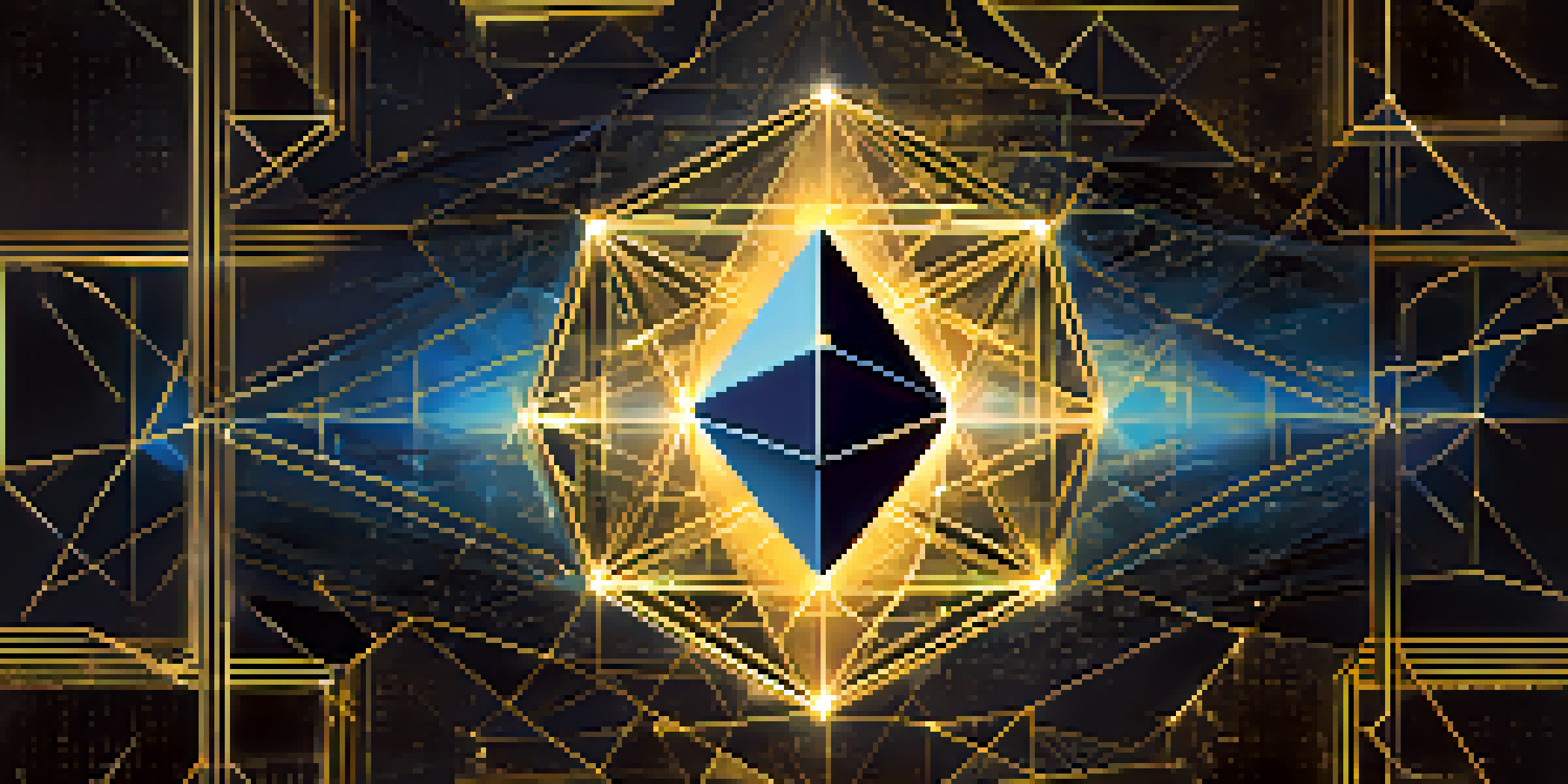A Beginner's Guide to Understanding Token Standards on Ethereum

What Are Token Standards on Ethereum?
Token standards are specific sets of rules that define how tokens on the Ethereum blockchain operate. They ensure that tokens can interact seamlessly with one another and with various applications. Think of them like the grammar rules of a language: without them, communication can become confusing and chaotic.
Tokens are the building blocks of decentralized applications and platforms.
In the Ethereum ecosystem, these standards help developers create tokens that maintain consistent functionality and interoperability. This means that when you buy or trade a token, you can expect it to behave in a predictable way. Just as everyone understands how to use a common language, token standards help everyone understand how to interact with different tokens.
The two most popular token standards on Ethereum are ERC-20 and ERC-721. Each serves a unique purpose and has specific features, making them suitable for different applications in the blockchain world.
Understanding ERC-20 Tokens: The Basics
ERC-20 is the most widely used token standard on Ethereum, and it represents fungible tokens. Fungible means that each token is interchangeable with another, much like dollars in your wallet. If you have one dollar bill, it can easily be exchanged for another dollar bill without any difference in value.

These tokens are perfect for creating currencies, utility tokens, or even rewards programs. For example, if a company launches a new app, they might create an ERC-20 token that users can earn and spend within the app. This standard simplifies the process for developers, as they only need to follow a set of predefined rules to create their tokens.
Token Standards Define Interoperability
Token standards on Ethereum, like ERC-20 and ERC-721, create a common framework that ensures tokens can interact seamlessly with applications and each other.
Moreover, the ERC-20 standard has established a robust ecosystem of wallets, exchanges, and applications that support it. This extensive compatibility makes it easier for users to buy, sell, and trade these tokens.
Exploring ERC-721 Tokens: Non-Fungible Assets
While ERC-20 tokens are fungible, ERC-721 tokens represent non-fungible assets, meaning each token is unique and cannot be exchanged on a one-to-one basis. This uniqueness makes ERC-721 tokens ideal for digital art, collectibles, and other one-of-a-kind items. Think of it like owning a rare baseball card; you can't just exchange it for another card of equal value.
The future of digital assets is built on blockchain, and token standards are the foundation of that future.
The rise of NFTs (Non-Fungible Tokens) has made ERC-721 tokens particularly popular in the art and gaming industries. Artists can tokenize their artwork, allowing buyers to own a verified piece of digital art, while gamers can own unique in-game items. This has opened up new revenue streams and opportunities for creators and collectors alike.
However, the uniqueness of each ERC-721 token also poses challenges, such as the need for proper verification and authenticity. The market for these tokens is still developing, but their potential is vast.
Differences Between ERC-20 and ERC-721 Tokens
At first glance, ERC-20 and ERC-721 tokens may seem similar because they both operate on the Ethereum blockchain. However, their core differences lie in their fungibility and use cases. While ERC-20 tokens can be easily exchanged and used interchangeably, ERC-721 tokens are unique and cater to specific assets.
For example, imagine a digital marketplace where you can buy both cryptocurrencies (like Bitcoin or Ethereum) and unique digital artworks. The cryptocurrencies would fall under the ERC-20 standard, while the digital artworks would be classified as ERC-721 tokens. This distinction allows for tailored approaches to monetizing and trading these assets.
ERC-20 vs. ERC-721 Explained
ERC-20 tokens are fungible and interchangeable, making them suitable for currencies, while ERC-721 tokens are unique, ideal for non-fungible assets like digital art.
Understanding these differences can help investors and developers choose the right type of token for their projects. It also clarifies how various tokens can be utilized in different sectors of the blockchain ecosystem.
Real-World Applications of Token Standards
Token standards have paved the way for numerous real-world applications across various industries. For instance, major companies are now using ERC-20 tokens for initial coin offerings (ICOs) to fund their projects. Investors can buy these tokens, which often grant them access to a product or service once it launches.
Furthermore, ERC-721 tokens have revolutionized the art world through NFTs, enabling artists to sell their digital works directly to collectors. Platforms like OpenSea and Rarible have emerged, allowing users to create, buy, and sell unique digital items with confidence.
These applications show that token standards are not just technical specifications; they are the backbone of innovation in the blockchain sphere, driving new business models and creating opportunities for creators and consumers alike.
Challenges and Limitations of Token Standards
While token standards have unlocked many opportunities, they are not without their challenges. One major concern is the lack of regulatory clarity in the cryptocurrency space. As governments and institutions scramble to catch up, the future of token standards can be uncertain, leading to potential legal issues for developers and investors.
Moreover, the rapid growth of tokens has led to market saturation, making it challenging for new projects to stand out. With thousands of ERC-20 and ERC-721 tokens available, users may struggle to determine which tokens are legitimate and which are not.
Future of Token Standards Looks Bright
As blockchain technology evolves, token standards will likely become more efficient and widely adopted across various industries, enhancing digital asset interactions.
Lastly, the environmental impact of blockchain technology, including token creation, is an ongoing concern. As discussions about sustainability continue, it raises questions about the future of token standards and their role in a greener digital economy.
The Future of Token Standards on Ethereum
As the blockchain ecosystem continues to evolve, so too will token standards. Developers and industry leaders are constantly exploring ways to enhance existing standards and create new ones. This innovation will likely lead to more efficient and user-friendly token creation processes in the future.
Additionally, as regulatory frameworks become clearer, we can expect greater adoption of token standards across industries. This could lead to more businesses utilizing tokens for various purposes, from loyalty programs to crowdfunding initiatives.

Ultimately, the future of token standards on Ethereum holds promise, with the potential to shape how we interact with digital assets. By keeping an eye on emerging trends, both developers and users can stay at the forefront of this exciting technological revolution.